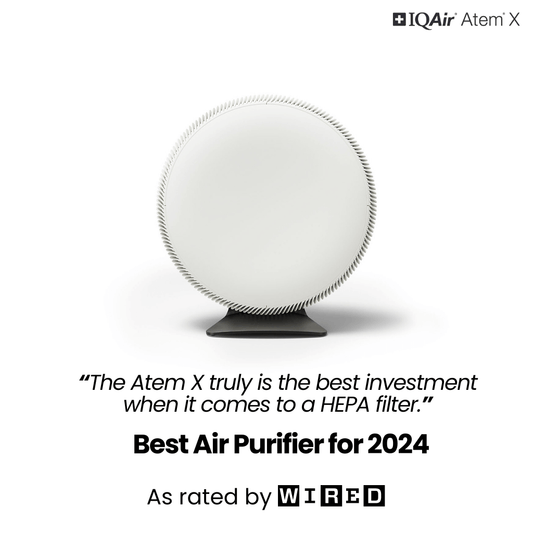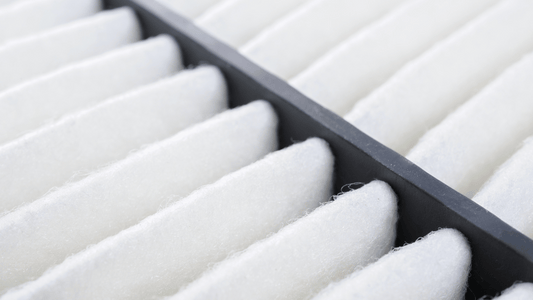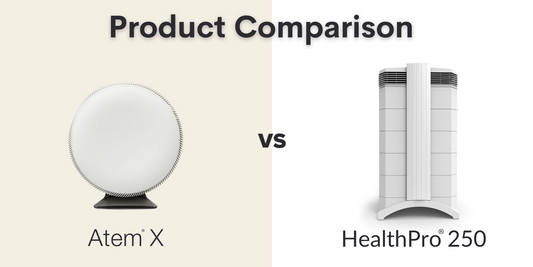Many people contact us with concerns about indoor air pollution and general air quality issues in a new or refurbished home. The problems can include breathing problems, asthma attacks, dizziness, eye, nose and throat irritation, and nausea in the short term and these may develop into chronic health issues.
What is the cause of my health problems in the new house?
New builds and refurbished properties may produce high levels of Volatile Organic Compounds (VOCs) and building dust. Because of the modern trend towards energy efficiency, modern buildings are better insulated, with fewer cracks and leaks, than older dwellings. Therefore, indoor air pollution builds up. The United States Environmental Protection Agency says that levels of indoor air pollution are typically 3-5 times higher indoors than they are outdoors, making indoor air quality a serious health problem (given that most people spend most of their time indoors, whether it be at home, school or in the office).
What are Volatile Organic Compounds?
VOCs are small carbon-based compounds that tend to be volatile – that is, they evaporate easily. They are found in many products – from furniture and carpets to household cleaners, paints and varnishes. Some VOCs do have a distinctive, often sweetish, smell. People describe it as a ‘new house’ or ‘new car’ smell. However, don’t be deceived. The level of odour in a new home may not be indicative of potential harm. Equally, some harmful VOCs do not have a smell.
Which VOCs are the most harmful?
Formaldehyde is probably the most widespread and dangerous of the VOCs you will find in a new or refurbished home. It is present in many different products, including cheap furniture (made of medium density fibreboard), where it is a component of the adhesive that binds the board together. Formaldehyde is classed by the International Agency for Research on Cancer as a human carcinogen.
How do VOCs get into the air of a new home?
The VOCs present in your new carpet or furniture enters the air by a phenomenon known as outgassing, which is basically a process of evaporation from the glues, finishes or varnishes present in the object. Outgassing takes place over a period of weeks, months or even years, from an object containing, or finished with, VOCs. This means that you are potentially breathing in VOCs over a long period of time, exposing your body to their toxic effects. Each VOC outgases from a product at a different rate with many becoming undetectable between three and 12 months after manufacture. Emissions of VOCs tend to peak around two weeks after production.
What is the cause of ‘new carpet’ odour?
A synthetic carpet is made of hard-wearing nylon fibre with a latex backing. It is the backing that contains VOCs, including styrene and 4-phenylcyclohexane. Some adhesives used to fix carpet to the floor contain benzene and toluene, which are among the most harmful VOCs and contribute to the characteristic smell. A new carpet can emit VOCs for five years or more and the EPA recommends ventilating your new carpet for at least 72 hours with open windows and fans, to get rid of VOCs (but low levels will obviously persist for much longer).
Is there any legislation on levels of VOCs and other air pollutants indoors?
The exposure to hazardous chemicals in the workplace is controlled by the Control of Substances Hazardous to Health (COSHH) regulations, administered by a Health and Safety Executive. Many VOCs – and other chemicals you may find in a new home - are covered by COSHH, including formaldehyde and dust. However, there are no regulations for non-industrial/domestic levels of these chemicals. In fact, there are few controls on indoor air quality, compared to legislation that applies to outdoor air, even though exposure to indoor air pollution likely causes as much (if not more) ill health than outdoor pollution exposure.
How can I avoid being exposed to VOCs in my new or refurbished home?
Here are some tips that can help improve the air quality issues in a new or refurbished home to prevent it from being a health hazard:
- Plan ahead. If you are doing some, or all, of the refurbishment yourself, shop carefully – looking for no, or low, VOC-containing products. The European Directive on VOCs (2010) means that products like paints and varnishes are now more thoroughly labelled and should have much lower VOC content than before. (Note: If you suffer from multiple chemical sensitivity (MCS) or asthma, even products with low VOC content can produce severe allergy and asthma symptoms). Beware also of using old, or stored, the stock of paints, varnishes and other products. If a builder, developer or other contractor is doing the work, discuss products with them before work begins. And when work is finished, you might want to consider avoiding to move into the property for a while, to allow some of the outgassing and for dust and debris to be removed. However, for people with a sensitivity to VOCs, off-gassing can cause discomfort for many months or even years.
- Choose hard flooring, rugs, or cork/bamboo flooring over new carpet. If you do want carpet, go for wool with a natural backing rather than nylon with synthetic backing.
- Buy second hand/recycled products that have long ago outgassed their VOCs.
- Avoid PVC window frames that may contain lead, cadmium and phthalates (a ubiquitous group of chemicals linked to possible cancer). Window frames are preferable, particularly if recycled or of durable hardwood.
- If you are on the premises when products containing VOCs are delivered, don’t let them into the building straight away, when levels of volatiles leaving the surface are highest. Be sure to ‘air’ them first. You can do this either outdoors or in an outhouse such as a garage. It might also be possible to do this in a room in the house where people who are sensitive to VOCs don’t actually go, like a study or utility room. Above all, avoid putting new furniture or carpet into the bedroom of someone with asthma or Multiple Chemical Sensitivity.
- Consider installing an air purifier. The IQAir GC MultiGas will remove VOCs, while the HealthPro 250 can deal with building dust as well as regular amounts of chemical contamination.
- Put plants like philodendrons, rubber plants and peace lilies in rooms to absorb polluting gases naturally.
- Focus on ventilation. Open windows often and use a fan for extra air circulation.
Visit our Air Purifier page for more information on the benefits of installing an air purifier.




